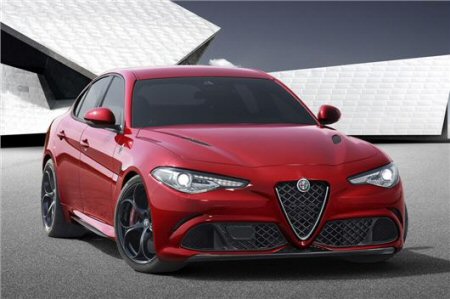
Alfa Romeo Giulia saloon reviewed
I know what youíre thinking itís yet another review about an executive four door saloon but Iím delighted to tell you itís not German, itís an Alfa Romeo. Last time Alfa Romeo had a saloon to take on the BMW 3 series, Mercedes C-Class and the Audi A4, was in 2011. And with the German rivals and Jaguarís very own XE being ultra-desirable and competent the Giulia has to be good, strong and desirable and from the outside itís a handsome thing.
Things donít fall apart in here either and I mean that quite literally, but thatís not what strikes you the most though. The cabin quality is very good but itís the design of the dashboard. I love the way it swoops round, its little design details that you really notice like Alfa Romeo embossed on the headrests, the dainty steering wheel and its aluminium paddle shift. Itís clear someone has put a lot of thought and effort into designing the cabin. For the most part the quality is absolutely fine - the plastics all on the top of the dash and on the doors, the leather feels very good. Itís definitely not on par with the Audi A4 but itís similar to the quality youíll find in the Jaguar XE and thatís not bad at all. However there are a few dodgy plastics if you look hard enough, like down on the doors, it all feels a bit cheap and scratchy and the buttons on the central console, the buttons just really feel quite cheap as if they are going to fall off any moment. Itís hooked up to an infotainment system which is actually fine. Itís not as intuitive as BMWís iDrive system but like I say it works good enough. Storage wise, thereís a couple of storage holders, thereís space under the central armrest and whilst the door bins donít pass the big water bottle test the glove box most certainly does, it will fit a 1.5l bottle of water.
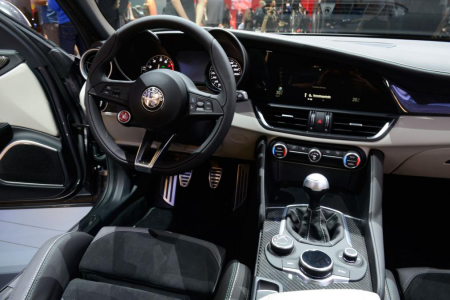
There are four flavours of Giulia entry level cars get dual zone climate control, the Alfa DNA drive mode selector and a whole heap of safety kit, including lane departure warning, forward collision warning and autonomous emergency breaking. Thatís a lot with 16 inch alloys, rear parking sensors, a 6.5 inch infotainment screen and the start, stop button being on the leather steering wheel. Moving up and you get more sporty styling culminating in the Giulia Quadrifoglio.
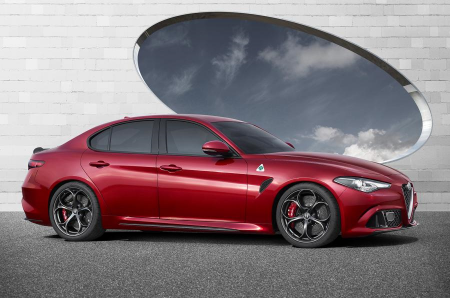
In the back and whilst these door apertures arenít particularly wide, once youíre actually back here the space is actually pretty good. Thereís a good amount of knee room and considering the car has a sloping roof the headroom is actually fine. Now there is a third seat belt in the middle but I really do struggle seeing how you would fit a third person here due to the middle seat not being particularly wide and the enormous transition tunnel. Elsewhere there are a couple of cup holders in the back, there are nets in the back of the seats and there are isofix points in the two outer most seats.
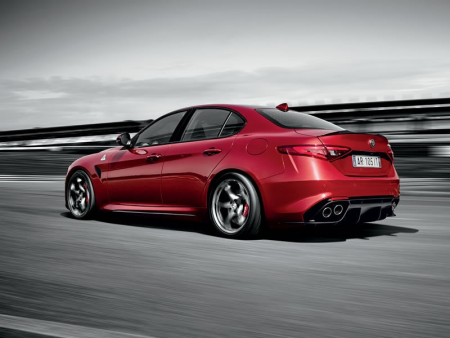
Itís good news round at the boot as well because the boot volume is the same as the BMW 3 Series, itís just over 480 litres. The opening is nice and wide, thereís not much of a lift either and the boot is nice and square. Now you can make it a little larger with folding rear seats. Itís really quite straight forward to collapse the seats down and when you do that youíve got a larger boot.
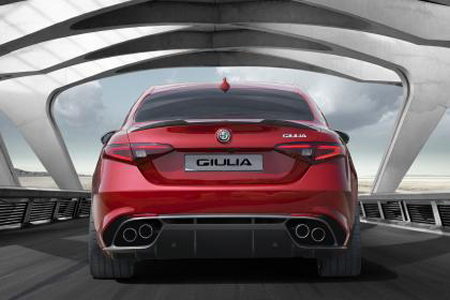
Under the bonnet is very straight forward, so there is 197bhp, 2 litre turbo petrol and a 2.2 litre diesel with 148 or 178bhp. For performance fans thereís a 2 litre petrol with 276bhp or for the power hungry thereís the Quadrifoglio with 503bhp. I know the diesels will be the default choice but donít overlook the 2 litre entry level petrol engine, itís smooth and very quiet but naturally if you are a company car driver you will be wanting to go for the diesels. We drove the 178bhp of the 2.2 litre and itís a good engine. Itís not quite as strong as BMWís 2 litre diesel but itís definitely on par with Jaguarís 2 litre and itís a lot nice than Mercedes 2.1 litre diesel engine. It doesnít matter what gear you are in itís very punchy and thereís not a lot of diesel grumble coming from the front of the car. Itís actually very refined on the motorway. Itís frugal too. In our time in it we averaged in the high 40s which while is a long way of the claimed 67.3mpg is as good as a BMW320D or a Jaguar 2 litre diesel. A low CO2 figure of 109g per km will please company car drivers too.
Unlike its rivals the Giulia only comes with 8 speed automatic gear box. Itís a really good auto it comes with the same one that Jaguar use on the XE and the BMW 3 Series and consequently the gear changes are very sharp and snappy.
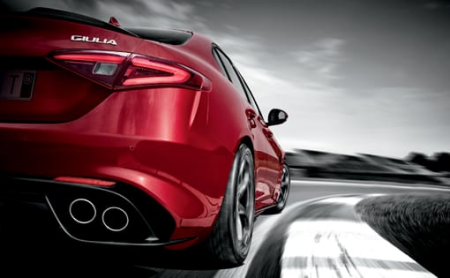
In most cars you get little bits of plastic glued to the back of the steering wheel but these are something different, something youíd expect in a Ferrari and they are such a delight to use. Now they cost £275 on their own or you can go for them as part of the performance pack which adds a limited slip differential and adapted dampeners. Now it costs £1950 and itís something I would recommend choosing. Why? Well Iíll explain a little bit more later on.
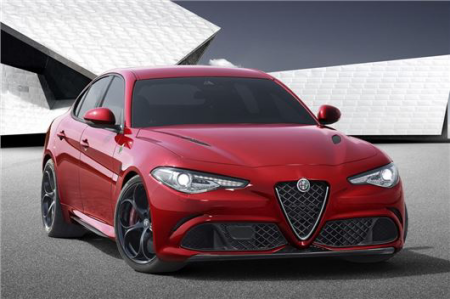
Alfa have worked hard on making the Giulia fun to drive and they succeeded. Itís incredibly agile and reactive to input and itís not a cost of refinement. Whilst there is a little diesel rumble when you rev the engine the Giulia is generally a quiet car. Itís just a shame it creates so much wind whistle. Now remember I said you should go for the performance pack, well the main reason I said that is because you get adaptive dampeners and they are really needed on the Giulia. Now because Alfa first made the Giulia dart around corners they also gave it a really firm suspension and the ride is just too hard. If you hit a pot hole mid corner the whole body thumps and skims around on the round, itís not a very enjoyable experience at all, so the adaptive dampeners help to round off the hard edges. Itís not as comfortable as a Mercedes C-Class but itís an awful lot better than the standard set up. And the Jag is slightly more fun and agile to drive too, meanwhile the BMW has a better engine, a good deal more polish overall and the Audi A4 has a much better build to the interior. And itís not cheap, Alfa Romeo have seemed to have discovered Audiís method for charging a lot for options. This car is the type of car youíd go for. It has nice alloys, Italian paint, aluminium paddles and so on and it costs over £40,000. That really is the limit of Alfaís negatives because this really is an extremely competent car and I havenít been able to say that about an Alfa Romeo for years. Put it this way Ė if you were intending to go to your BMW dealership, you could diverge off into the Alfa Romeo dealership and buy one of these and you really wouldnít be disappointed.













